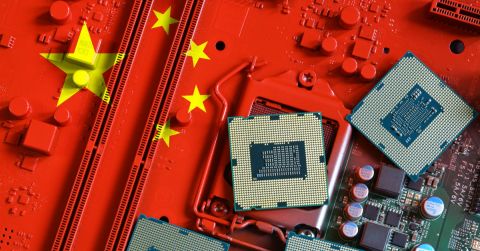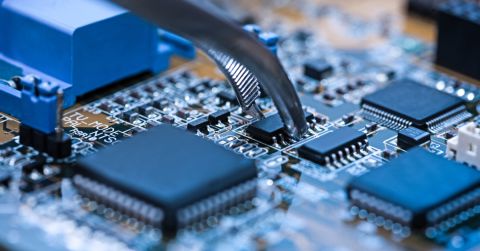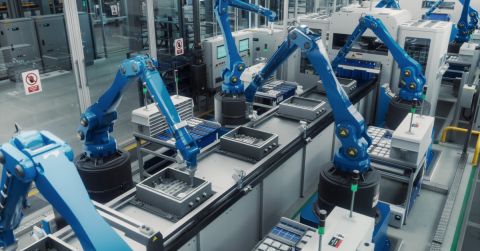Where to Find Rad-Hard Components for Military and Aerospace Systems

Rad-hard electronics are critical for reliability beyond nuclear power plants.
On June 3, 2020, SpaceX launched the Falcon 9 rocket carrying NASA astronauts into low earth orbit for the first time since July 8, 2011. The SpaceX launch is historic as Elon Musk’s company became the first private organization to carry humans into orbit. The space race never really ended, but the upcoming commercialization of space has opened new doors for a variety of aerospace companies and new organizations to build systems for low earth orbit and beyond.
What makes these systems reliable and rugged enough to withstand temperature extremes, mechanical shocks, and other hazards of space? One hazard that is invisible to electronics designers but reduces lifetime is radiation in low earth orbit and deep space. The same hazard can be found in radioactive environments on earth, such as nuclear power plants, waste repositories, and particle accelerators. Radiation hardened components, or rad-hard components, will help ensure your system has a long lifetime in these uniquely challenging environments.
What Makes Rad-Hard Components Different?
Simply saying a component is rad-hard is one thing, but there are specific aspects of these components that make them very different from typical electronic components you’ll find on the market. The differences are found in the actual circuit design in an IC, as well as in the packaging design.
There are numerous events that need to be considered when selecting or designing rad-hard components and electronic systems. The components need to withstand different types of damage mechanisms, and various damage mechanisms may dominate in different environments. Four prominent damage mechanisms are as follows:
Total ionization dose (TID). This metric quantifies radiation damage sustained by a component due to continuous exposure to ionizing radiation. Continuous ionization leads to, at minimum, charge build-up and trapping in semiconductor oxides, which increases leakage current and causes random bias offsets in circuit blocks.
Proton and neutron displacement damage. This effect occurs when high energy subatomic particles collide with atoms in the semiconductor lattice. These high energy particles can displace atoms and create interstitial defects in the lattice. This is a major problem in radioactive imaging devices, where defects induced in pixels lead to increased dark current.
Transient dose effects. This set of effects occurs during high radiation flux events, such as during a nuclear blast. The blast creates photocurrents throughout the semiconductor die, causing transistors to randomly open and logical states to change in logic circuits. Permanent damage can occur during long pulses, or latchups can occur during high gamma ray/x-ray flux events.
Single event effects (SEE). This class of events includes many different effects that can occur within an integrated circuit. Individual transistors or other regions of an IC can experience latchup effects, bit-flips can occur in a register or other portion of the system, burnout can occur in forward biased MOSFETs, as well as other effects. SEE events

Different types of ionizing radiation produce different effects on electronics and organic compounds.
Rad-hard components are designed to withstand a few of these effects, which will depend on the environment in which the device is being deployed. The typical specification used to quantify radiation hardening is total absorbed dose (or TAD, measured in units of rad). All TAD metrics are not created equal as the value you need depends on the environment and radiation damage effect you need to withstand. The overall lifetime of the device then depends on the radiation flux in the environment (i.e., TAD/flux = lifetime).
Radiation Tolerant vs. Radiation Hardened Electronics
The difference between radiation tolerance vs. rad-hard components may appear to be lexical, by these two grades of commercial and military products are quite different. The scope of differences could include circuit design, layout, manufacturing process, packaging or something else entirely. Component manufacturers will not divulge their secret sauce for making their radiation tolerant vs. rad-hard components.
Although it can be difficult to see what specific processes and design aspects make these two grades of components different, the differences are seen in the TAD specification. Radiation-tolerant components are usually specified as reliable up to some limit below 100 krad, while rad-hard components can sit well above this limit. Radiation tolerant components are appropriate for lower altitude systems that will already receive lower doses of radiation. This also helps satisfy the drive for lower cost military and aerospace systems.
It is important to note that some commercial processes will be inherently more radiation tolerant or hardened. SiGe is one transistor material that is known to survive up to Mrad levels of TAD. However, if SiGe transistors are fabricated in a BiCMOS process, the CMOS module will be the limiting factor on radiation tolerance of a product; a TID value as small as 5 krad is enough to cause permanent damage to silicon in CMOS components. Bipolar components tend to have higher tolerance than CMOS components.

The SAMRH71 rad-hard microcontroller from Microchip comes in a ceramic package. [Source: Microchip]
Rad-Hard Component Options
Not all components from a manufacturer have rad-hard equivalents, but you can find the rad-hard components you need when you use the right electronics search engine. Manufacturers that are targeting the rad-hard market will list “radiation hardened” in their tagline descriptions; searching this term will help you narrow down to a short list of candidate components. These components are in lower demand so they tend to be rather expensive, but your system will have a much longer lifetime with these more rugged components.
Some commonly-cited rad-hard components are Xilinx FPGAs, mixed-signal microcontrollers by Texas Instruments, and a variety of products by Renesas. The current set of military standards on rad-hard components is MIL-PRF-38535; companies awarded Class Y certification under this standard are confirmed to have met or exceeded MIL reliability standards. Be sure to watch for conformance to this standard or certification if you’re shopping for rad-hard components.
When you need to find rad-hard components for your next military or aerospace system, use the parts search features in Octopart. The search engine in Octopart includes filtration features that help you narrow down by keyword, manufacturer, specifications, and lifecycle. You can start searching for rad-hard ICs using our integrated circuits category page.
Stay up-to-date with our latest articles by signing up for our newsletter.








